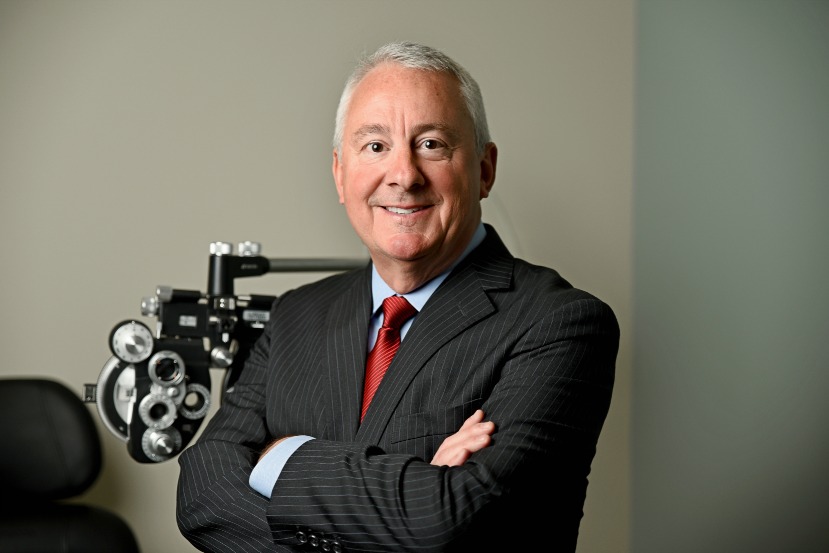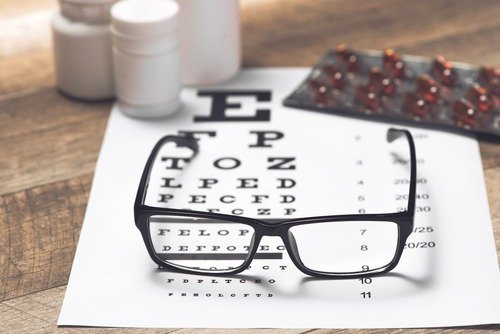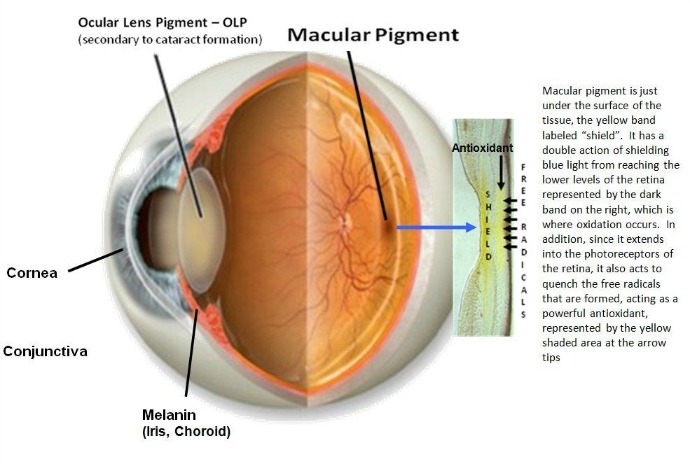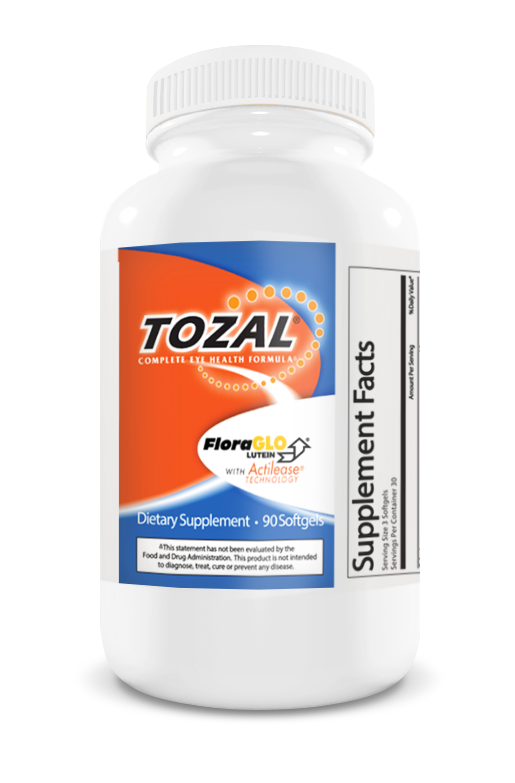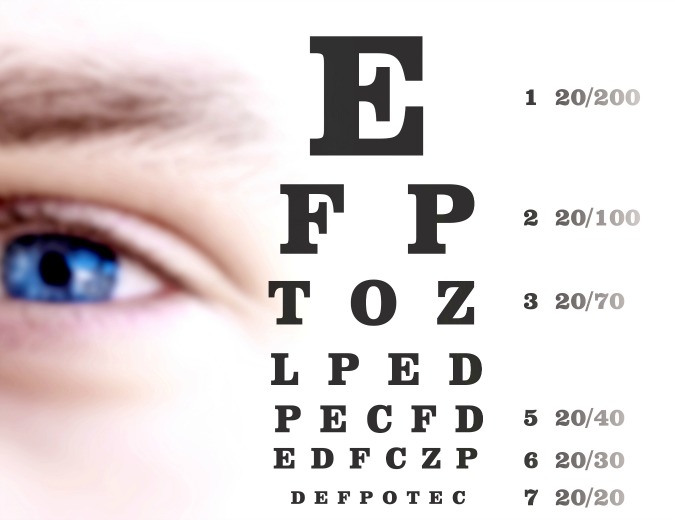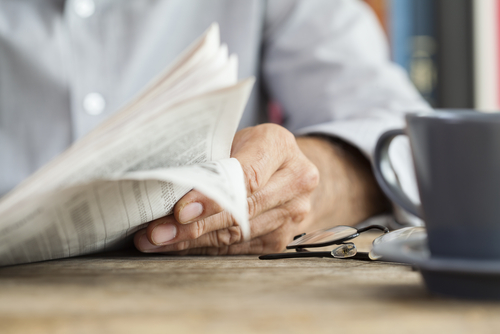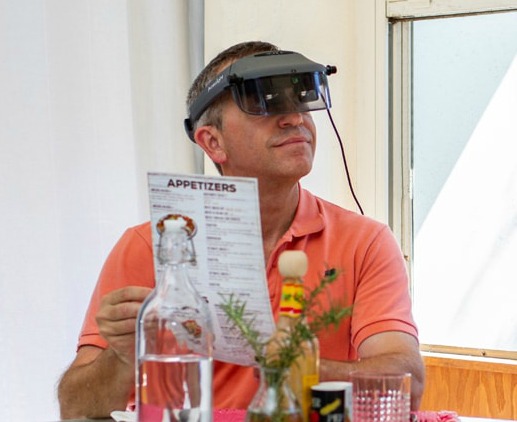Macular Degeneration Treatment Options: Nutrition, Low Vision Services and Supplements
| Find out about macular degeneration treatment options by Dr. Edward Paul. Dr. Paul takes on an integrative approach using traditional and complementary modalities. Learn what he has to say about nutrition, low vision services and supplements. |
Dr. Edward Paul is a low vision specialist with a Ph.D. in nutrition. One of Dr. Paul's specialties is age-related macular degeneration (AMD). He graduated from Southern College of Optometry and also holds a Ph.D. in nutritional medicine. His interest in nutrition and eye disease lead to the development of TOZAL, an AREDS2 based supplement for the treatment and prevention of AMD.
He has served as professor of ophthalmology at three international medical schools and was chosen as one of “America’s Top Optometrists” by the Consumer’s Research Council.
He is a Diplomate of the International Academy of Low Vision Specialists and the author of several books, including Prevent and Reverse Eye Disease.
Macular Degeneration Book
1. Your book Prevent & Reverse Eye Disease is an ebook on Kindle. What prompted you to write it and what is the main message you want readers with macular degeneration to understand?
The majority of eye doctors are not educating their patients on alternative or complimentary medical treatments when it comes to age related macular degeneration (AMD).
My practice philosophy is one that is "integrative" - which means including traditional therapies (for example - injections for patients with "wet" AMD), but also looking at emerging therapies that show promise. The main message I hope patients get from the book is there is hope! Going blind is not their only option. To get your e-book visit Amazon here:
Prevent & Reverse Eye DiseaseMacular Degeneration and Nutrition
3. Why do you say that nutritional therapy should be included in every patient's macular degeneration treatment plan?
Nutritional therapy is the only treatment that has been shown to be effective in the "dry" form of AMD. New evidence now suggests that patients at risk for AMD may actually be able to prevent the disease with nutritional supplementation.
One example of this is that Vitamin D and B complex have shown to reduce the incidence of AMD in women. Omega-3 fatty acids have been effective in reducing the conversion from dry to wet AMD and emerging research is showing that patients who receive injections for wet AMD may benefit from omega-3 in that the injections seem to be more efficacious and fewer injections are needed. Nutritional therapy is inexpensive, safe, and continues to show a tremendous benefit to the AMD community.
4. What are RDA levels? What do they mean and how should one interpret these numbers. Give us an example of perhaps Vitamin C.
RDA, or known by its full name - Recommended Daily Allowance - is being revised and will be called the Dietary Reference Intake (DRI) and is a collaborative effort between the USA and Canada. RDA is the daily intake level of a nutrient that is considered to be sufficient to meet the requirements of 97–98% of "healthy" individuals.
With Vitamin C, the RDA for adult men is 90 mg and for adult women 75 mg. That being said, the amount of Vitamin C found to be effective in the AREDS study was 500 mg. With nutritional formulations for eye disease, AMD in particular, the RDA levels found in most multi-vitamins is simply not enough to be effective therapeutically.
Macular Degeneration Treatment - Lutein Dosage
5. You write about the importance of lutein. What is lutein and what role does it play in macular health?
Lutein and zeaxanthin are carotenoids that filter harmful high-energy blue wavelengths of light and act as antioxidants in the eye, helping protect and maintain healthy cells.
Of the 600 carotenoids found in nature, only two are deposited in high quantities in the retina (macula) of the eye: lutein and zeaxanthin. The quantity of lutein and zeaxanthin in the macular region of the retina can be measured as macular pigment optical density (MPOD).
Recently, MPOD has become a useful biomarker for not only predicting disease but also visual function. Unfortunately, the human body does not synthesize the lutein and zeaxanthin it needs, which is the reason why green vegetables are essential to good nutrition. Daily intake of lutein and zeaxanthin through diet, nutritional supplements, or fortified foods and beverages is important for the maintenance of good eye health. I recommend at least 15 mg of Lutein and 3 mg of Zeaxanthin daily.
Vitamins for Eyes
6. What are your suggestions for supplements for those with macular degeneration and for those wanting to prevent macular degeneration?
I recommend supplements that contain the original AREDS formulation in combination with 15 mg of Lutein, 3 mg of Zeaxanthin, and at least 600 mg EPA/DHA - Omega-3 fatty acids.
7. What treatments do you use in your practice that have shown some success in reversing macular degeneration?
I use an eye vitamin that I developed - TOZAL Complete Eye Health Formula - for my patients with AMD. This supplement has been shown to either improve or stabilize vision in 76% of patients within 6 months. We have also been able to photodocument a decrease in the number of drusen and an improvement in the overall appearance in their OCT. Tozal is available at https://shopfocuslabs.com/product/tozal-complete-eye-health-formula-90-ct/
Low Vision Specialist
8. You also provide low vision exams in your practice. How is that exam different from a regular eye exam?
It is not anything like a regular eye exam. The Low Vision evaluation consists of three steps:
1. Find out the amount of vision the patient has.
2. Find out the amount of vision needed to do the task desired.
3. Figure out the best magnification device that allows the person to do the task.
We find out the amount of vision the patient has by performing a low vision evaluation. We use special charts and techniques to "draw out" any residual vision that may be "hiding" in the periphery. We recheck the regular eyeglass prescription to improve it if possible.
We see how magnification affects the level of vision. Next we find out the amount of vision needed to do the task desired with very specific questions and demonstrations.
We ask the patient to bring samples of print they want to see (racing charts, stock market pages, automobile repair manuals…). We ask the patient to bring samples of activities they do (needlework, crossword puzzles art work, bridge cards…).
We figure out the best magnification device that allows the person to do their desired task and we actually demonstrate the vision improvement the patient can expect in the office. There is no guesswork and the patient can actually experience the vision improvement they can expect during the low vision consultation.
9. Give us an example of one of the more helpful low vision devices that is only available through a low vision center?
The newest addition to our low vision war chest is Acesight, electronic glasses that help visually impaired people regain independence. Acesight auto-focuses on the image the patient wants to see so that an individual can watch TV, use a computer, play music or read mail.
The device is ideally suited to individuals with a visual acuity between 20/100 or 20/800 and who suffer from macular degeneration.
We welcome patients to call our at 910-256-6364. Patients can also visit our web site at www.DrEdwardPaul.com
Go from Integrative Macular Degeneration Treatment to Macular Degeneration Treatment
Go from Integrative Macular Degeneration Treatment to WebRN Macular Degeneration Home
